Commenti / Domande (279)
![]() Sharon ha scritto:
Sharon ha scritto:
Hi, Sharon again making size 52 Silver Haze with snow. Made the sleeve twice and had to redo. I would like a sleeve a longer than the short version. Following the instruction for the short version is too small in width. The instruction for the long sleeves is perfect with but way too long. Suggestion is appreciate. Sharon
18.11.2021 - 20:01DROPS Design ha risposto:
Dear Sharon, we are unfortunately not able to adjust every pattern to every single request, please contact your DROPS store or any knitting forum for any individual assistance adjusting the pattern as you would like it to be. Thanks for your comprehension. Happy knitting!
19.11.2021 - 07:16
![]() Sharon ha scritto:
Sharon ha scritto:
Hi. Thanks so much. Everything worked out from the explanation i received. Sharon
18.11.2021 - 16:34
![]() Sharon ha scritto:
Sharon ha scritto:
Is there a problem withthe snow version size 52. Largest size. Am here: when the piece measures 35-36-37-38-39-40 cm [13¾”- 14¼”- 14½”- 15”- 15¼“-15¾”] bind off for armholes in the beg of every row each side: 3 sts 1 time, 2 sts 0-0-1-2-3-3 times and 1 st 1-2-3-3-3-4 times = 40-42-42-44-46-48 sts left. won’t be left with 48 stitches after the decreases. Shouldn’t the stitches after decrease be 58. First Dec. instructions says to decrease 3 st. 1 time. There is 2 armholes.
17.11.2021 - 21:23DROPS Design ha risposto:
Dear Sharon, in Snow largest size you have 74 sts, then cast off 3 sts at the beg of next 2 row (3 sts on each side) = 68 sts, then cast off 2 sts at the beg of next 6 rows (3 times 2 sts on each side) = 68-12=56 sts; then cast off 1 stitch at the beg of next 8 rows (4 times 1 st on each side) = 56-8=48 sts. Can this help?
18.11.2021 - 08:38
![]() Sharon ha scritto:
Sharon ha scritto:
Hi, the instructions says to increase 1 stitch at the side for the front and there after every x amount of rows. Making largest side. how many rows equals 3 cm? I worked it out and I got 7 rows. Could be wrong. Is the hem a slanted shape? Is there a gauge for the seed stitch? Am confused.
09.11.2021 - 15:48DROPS Design ha risposto:
Dear Sharon, the number of rows depend on your exact gauge (which might be different for every individual. The pattern itself works with 15 rows = 10 cm. . Please make a gauge swatch, wash, and then measure. The hem should be straight. Happy stitching!.
09.11.2021 - 21:41
![]() Sharon ha scritto:
Sharon ha scritto:
Hei! Am still puzzled over this sweater. The instructions says to decrease 1 stitch each side after 2inches. After 2 inches there is an increase every 1,1/8 rows how much rows is 1. 1/8. I am not good at math so my calculations could be incorrect. Also after the increases the hem is not straight like the picture. Is the hen slanted?
09.11.2021 - 15:25DROPS Design ha risposto:
Dear Sharon, with a tension of 22 rows = 10 cm/4 ", 1 row should be approx. 0.45 cm/1.18 inches. The bottom edge should be straight, the decreases are worked on the sides of the jacket to give the A-Shape - see chart. Hope this will help.
10.11.2021 - 07:23
![]() Sharon ha scritto:
Sharon ha scritto:
Hi! Thanks again. Am making size 52. Am still confused because theme stockinett stitch section and the seed stitch section is not the same length. The instructions and your response is “when the piece measures 15 inches to start the buttonhole. I So am not sure how to proceed or if I should just give up on this project. I have put a lot of time into it so far. I could purchase the yarn used in the pattern but will I have the Sam problems.
08.11.2021 - 11:55DROPS Design ha risposto:
Dear Sharon, do you mean size XXXL? When piece measures 58 cm / 22¾” you cast off the first 10 sts (= seed stitches) for neck, continue working the remaining sts as before and continue casting off for neck as explained (all seed stitches will then be cast off and picked up later for neck). First buttonhole is worked at 15 " and last buttonhole will be opened at 22', this means before you cast off for neck. Can this help?
08.11.2021 - 12:15
![]() Sharon ha scritto:
Sharon ha scritto:
First let me thank this team for responding to all my questions. I am at the right front of this project. The seed stitch band is on 18 inches an am supposed to make 3 buttonholes. The problem I have is one buttonhole at 18 inches the other at 20 inches brings me to where I should begin to cast off for the neck with not enough length here for the last buttonhole? What is the solution here? Thinking og ripping out and making a buttonhole closer yo the first. Am just tired of undoing my work.
06.11.2021 - 06:52DROPS Design ha risposto:
Dear Sharon, could you remind us which size you are working on? If I'm right thinking you are working the largest size, buttonholes are worked when piece measures 15”- 18½”- 22” and you will bind off fro neckt when piece measures 22¾, ie after the 3rd buttonhole. Can this help?
08.11.2021 - 07:30
![]() Sharon ha scritto:
Sharon ha scritto:
Thank you, thank you so much for answering all my questions. Greatly appreciate. Now am a happy knitter and cannot wait to finish this sweater and enjoy it. S
29.10.2021 - 12:42
![]() Sharon ha scritto:
Sharon ha scritto:
Hi! Finally Working on the left front and I have a question: Where should I measure for length? The Stockinette area has a length of 31 cm with 3 stitches left to decrease. The moss stitch area measures 22 cm in length. My gauge in Stockinette is spot on after blocking. For the buttonholes I assume I would measure only the moss stitch area. And the Stockinette area for all other purposes. Please confirm.
29.10.2021 - 11:34DROPS Design ha risposto:
Hi Sharon, for the buttonholes you should measure the moss stitch area,the stockinette area for all other purposes. A jumper or a jacket the length is measured from the highest point on the shoulder closest to the neckline. Happy knitting!
29.10.2021 - 12:36
![]() Sharon ha scritto:
Sharon ha scritto:
Hi! Thanks for answering all my questions. I am now doing the right side og this sweater. The double Moss stitch draws in and make this therefore shorter than the Stockinette side is 20 inches long and the moss stitch is 15 inches long. This is so confusing will this not affect where the buttonholes are made. The bottom is wider because of the shaping. What should be done here? Should I measure just the moss stitch band and follow the instructions for the bottom holes? S
25.10.2021 - 11:27
Silver Haze |
|
 |
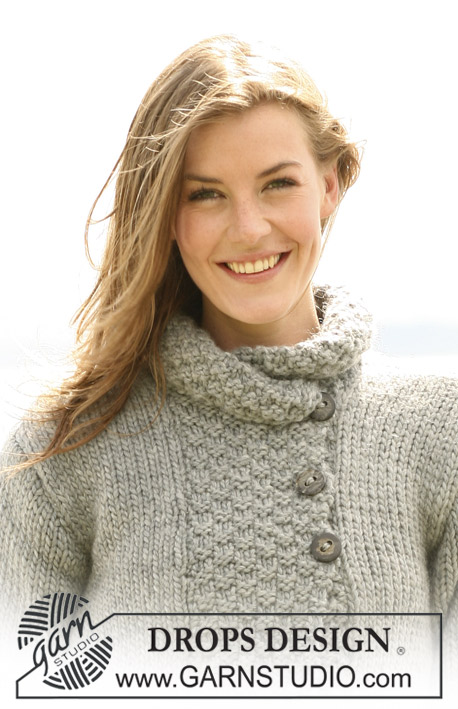 |
Giacchino DROPS in "Snow" o "Andes" oppure in "Nepal" con forma ad A e maniche a ¾ o lunghe. Taglie: dalla S alla XXXL.
DROPS 103-1 |
|
|
Commento generale: La m. a grana di riso doppia sul davanti tirerà un po’ quando lavorate, ma si allungherà quando il capo sarà finito. CAMPIONE: 11 m x 15 f a m rasata = 10 x 10 cm. GRANA DI RISO DOPPIA: 1° f: * 2 m rov, 2 m dir *, ripetere *-*. 2° f: rov su rov e dir su dir. 3° f: * 2 m dir, 2 m rov *, ripetere *-* 4° f: dir su dir e rov su rov. Ripetere i f 1-4. COSTE: * 2 m dir, 2 m rov *, riptere *-*. M LEGACCIO: lavorare a dir avanti e indietro su tutti i f. ASOLA: Intrecciare per le asole sul davanti destro. 1 asola = intrecciare la 4° m dal bordo, sul f di ritorno avviare una nuova m nello stesso punto. Intrecciare per le asole quando il lavoro misura: Taglia S: 33, 40 e 47 cm. Taglia M: 35, 42 e 49 cm. Taglia L: 37, 44 e 51 cm. Taglia XL: 38, 45 e 52 cm. Taglia XXL: 38, 46 e 54 cm. Taglia XXXL: 38, 47 e 56 cm. DIETRO: Lavorato avanti e indietro! Avviare 64-68-72-80-84-88 m (compresa 1 m di vivagno a ogni lato) con i ferri n°8 mm con il filato Snow. Lavorare 2 f a m legaccio, e poi 2 f a coste con 1 m di vivagno e 2 m dir per ogni lato (visto dal diritto del lavoro) – LEGGERE LA SPIEGAZIONE SOPRA. Continuare a m rasata. FARE ATTENZIONE ALLA TENSIONE DEL LAVORO! Quando il lavoro misura 5 cm intrecciare 1 m a ogni lato ogni 3½-3½-4½-4-5-5 cm per un totale di 8-8-7-8-7-7 volte = 48-52-58-64-70-74 m. Quando il lavoro misura 35-36-37-38-39-40 cm intrecciare per gli scalfi a ogni lato su f alterni: 3 m 1 volta, 2 m 0-0-1-2-3-3 volte e 1 m 1-2-3-3-3-4 volte = 40-42-42-44-46-48 m rimaste. Quando il lavoro misura 51-53-55-57-59-61 cm intrecciare le 12-12-12-14-14-14 m centrali per il collo. Sul f successivo intrecciare un’altra m verso il collo = 13-14-14-14-15-16 m rimaste per ogni spalla. Intrecciare quando il lavoro misura 54-56-58-60-62-64 cm. DAVANTI SINISTRO: Avviare 39-41-43-49-51-53 m (compresa 1 m di vivagno a lato) con i ferri n° 8 mm con il filato Snow. Lavorare 2 f a m legaccio e quindi 2 f a coste con 1 m di vivagno e 2 m rov a lato (visto dal diritto del lavoro). Continuare a m rasata e con le 14-14-14-16-16-16 m al centro davanti a grana di riso doppia – LEGGERE LA SPIEGAZIONE SOPRA! Quando il lavoro misura 5 cm intrecciare a lato come fatto per il dietro = 31-33-36-41-44-46 m. Quando il lavoro misura 35-36-37-38-39-40 cm intrecciare per lo scalfo a lato come fatto per il dietro = 27-28-28-31-32-33 m. Quando il lavoro misura 49-51-53-54-56-58 cm intrecciare 10 m al centro davanti per il collo. Inserire 1 segnapunti dopo le m intrecciate. Quindi intrecciare per il collo ogni 2 f: 2 m 2-2-2-3-3-3 volte e 1 m 0-0-0-1-1-1 volte = 13-14-14-14-15-16 m rimaste per la spalla. Intrecciare le m rimaste quando il lavoro misura 54-56-58-60-62-64 cm. DAVANTI DESTRO: Avviare e lavorare come per il davanti sinistro ma al contrario. Inoltre ricordarsi di intrecciare per le asole sul bordo davanti – LEGGERE LA SPIEGAZIONE SOPRA. MANICA: I numeri prima delle ( ) si riferiscono alle maniche a ¾ e i numeri tra ( ) si riferiscono alle maniche lunghe. Avviare 34-34-34-38-38-38 m (compresa 1 m di vivagno a ogni lato) con i ferri n°8 mm con il filato Snow. Lavorare a grana di riso doppia – leggere la spiegazione sopra – con 1 m di vivagno a ogni lato. Quando il lavoro misura 10 cm continuare a m rasata. Allo stesso tempo quando il lavoro misura 11 (25) cm aumentare 1 m a ogni lato ogni 9-6-4½-6-4-2½ cm per un totale di 3-4-5-4-5-7 volte = 40-42-44-46-48-52 m. Quando il lavoro misura 34-33-32-31-29-28 (49-48-47-46-44-43) cm intrecciare per l’arrotondamento della manica da ogni lato ogni 2 f: 3 m 1 volta, 2 m 1 volta e 1 m 2-3-4-4-6-7 volte, continuare a intrecciare 2 m a ogni lato fino a quando il lavoro misura 40 (55) cm, quindi intrecciare 3 m a ogni lato 1 volta e intrecciare le m rimaste. Il lavoro misura circa 42 (57) cm. CONFEZIONE: cucire i margini delle spalle. COLLETTO: Riprendere circa 24-28 m tra i segnapunti sulla scollatura (non riprendere le m nelle 10 m più esterne a ogni lato al centro davanti). Lavorare 2 f a m legaccio – sull’ultimo f distribuire 10 aumenti in modo uniforme = 34-38 m. Continuare a grana di riso doppia con 1 m a legaccio da ogni lato. Allo stesso tempo aumentare 2 m a ogni lato come segue: per aumentare lavorare 2 m nella m più esterna, quindi fare un gettato che dovrebbe essere ritorto sul f di ritorno – incorporare le nuove m nel motivo mentre si procede. Aumentare 2 m all’inizio del f per un totale di 6 volte da ogni lato = 24 m in più = un totale di 58-62 m. Intrecciare quando il colletto misura 12 cm al centro dietro. Cucire il colletto stretto ai davanti da ogni lato nella parte più esterna del bordo, cioè le nuove m sono cucite alle 10 m intrecciate da ogni lato. Cucire il braccio e i margini dei lati all’interno della m di vivagno. Attaccare i bottoni. _________________________________________________________________ NEPAL Taglie: S – M – L – XL – XXL - XXXL Materiali: DROPS Nepal di Garnstudio maniche a ¾: 750-800-900-1000-1100-1200 g, colore n° 9015, grigio maniche lunghe: 850-900-1000-1100-1200-1300 g, colore n° 9015, grigio. Ferri diritti DROPS n° 4,5 mm – o misura necessaria ad ottenere la tensione corretta. Bottoni DROPS di corno di bufalo n°. 536: 3 pezzi. CAMPIONE: 17 m x 22 f a m rasata = 10 x 10 cm GRANA DI RISO DOPPIA: 1° f: * 2 m rov, 2 m dir *, ripetere *-*. 2° f: rov su rov e dir su dir. 3° f: * 2 m dir, 2 m rov *, ripetere *-*. 4° f: dir su dir e rov su rov. Ripetere i f 1-4. COSTE: * 2 m dir, 2 m rov *, ripetere *-*. M LEGACCIO: Lavorare a dir avanti e indietro su tutti i f. ASOLE: Intrecciare per le asole sul davanti destro. 1 asola = intrecciare la 5° e la 6° m dal bordo, sul f di ritorno avviare 2 nuove m nello stesso punto. Intrecciare per le asole quando il lavoro misura: Taglia S: 33, 40 e 47 cm. Taglia M: 35, 42 e 49 cm. Taglia L: 37, 44 e 51 cm. Taglia XL: 38, 45 e 52 cm. Taglia XXL: 38, 46 e 54 cm. Taglia XXXL: 38, 47 e 56 cm. DIETRO: Lavorare a dir avanti e indietro! Avviare 96-104-112-124-132-136 m (compresa 1 m di vivagno da ogni lato) con i ferri n° 4,5 mm con il filato Nepal. Lavorare 2 f a m legaccio, e poi 2 f a coste con 1 m di vivagno e 2 m dir da ogni lato (visto dal diritto del lavoro) – leggere la spiegazione sopra. Continuare a m rasata. FARE ATTENZIONE ALLA TENSIONE DEL LAVORO! Quando il lavoro misura 5 cm intrecciare 1 m a ogni lato ogni 2½-2½-2½-2½-2½-3 cm per un totale di 11-12-12-13-12-11 volte = 74-80-88-98-108-114 m. Quando il lavoro misura 35-36-37-38-39-40 cm intrecciare per gli scalfi a ogni lato ogni 2 f: 3 m 1-1-1-2-2-2 volte, 2 m 0-1-2-3-4-5 volte e 1 m 3-3-4-3-4-4 volte = 62-64-66-68-72-74 m rimaste. Quando il lavoro misura 51-53-55-57-59-61 cm intrecciare le 20-20-20-24-24-24 m centrali per il collo. Sul f successivo intrecciare un’altra m verso il collo = 20-21-22-21-23-24 m rimaste per ogni spalla. Intrecciare quando il lavoro misura 54-56-58-60-62-64 cm. DAVANTI SINISTRO: Avviare 59-63-67-75-79-81 m (compresa 1 m di vivagno a lato) con i f n°4,5 mm con il filato Nepal. Lavorare 2 f dir a m legaccio e poi 2 f a coste con 1 m di vivagno e 2 m a rov. a lato (visto dal diritto del lavoro). Continuare a m rasata e 22-22-22-26-26-26 m al centro davanti a grana di riso doppia – LEGGERE LA SPIEGAZIONE SOPRA! Quando il lavoro misura 5 cm intrecciare a lato come fatto per il dietro = 48-51-55-62-67-70 m. Quando il lavoro misura 35-36-37-38-39-40 cm intrecciare per lo scalfo a lato come fatto per il dietro = 42-43-44-47-49-50 m. Quando il lavoro misura 49-51-53-54-56-58 cm intrecciare 16 m al centro davanti per il collo. Inserire 1 segnapunti dopo le m intrecciate. Poi intrecciare per il collo ogni 2 f: 2 m 2-2-2-4-4-4 volte e 1 m 2 volte = 20-21-22-21-23-24 m rimaste per la spalla. Intrecciare le m rimaste quando il lavoro misura 54-56-58-60-62-64 cm. DAVANTI DESTRO: Avviare e lavorare come per il davanti sinistro ma al contrario. Inoltre ricordarsi di intrecciare per le asole sul bordo davanti – LEGGERE LA SPIEGAZIONE SOPRA. MANICA: I numeri prima delle ( ) si riferiscono alle maniche a ¾ e i numeri tra le ( ) si riferiscono alle maniche lunghe. Avviare 50-50-54-54-58-58 m (compresa 1 m di vivagno a ogni lato) con i f n°4,5 mm con il filato Nepal. Lavorare a grana di riso doppia– LEGGERE LA SPIEGAZIONE SOPRA – con 1 m di vivagno a ogni lato. Quando il lavoro misura 10 cm continuare a m rasata. Allo stesso tempo quando il lavoro misura 11 (25) cm aumentare 1 m a ogni lato ogni 5-3-3-2-2-1½ cm per un totale di 5-7-7-9-9-11 volte = 60-64-68-72-76-80 m. Quando il lavoro misura 34-33-32-31-29-28 (49-48-47-46-44-43) cm intrecciare per l’arrotondamento della manica a ogni lato a f alterni: 3 m 1 volta, 2 m 3 volte e 1 m 1-2-3-4-6-7 volte, continuare a intrecciare 2 m a ogni lato fino a quando il lavoro misura 41 (56) cm, quindi intrecciare 3 m a ogni lato 1 volta e intrecciare le m rimaste. Il lavoro misura circa 42 (57) cm. CONFEZIONE: Cucire i margini delle spalle. COLLETTO: Riprendere circa 36-42 m tra i segnapunti a livello della scollatura (cioè non riprendere le m nelle 16 m più esterne a ogni lato al centro davanti). Lavorare 2 f a m legaccio – sull’ultimo f distribuire 12 aumenti in modo uniforme = 48-54 m. Continuare a grana di riso doppia con 1 m a m legaccio da ogni lato. Allo stesso tempo aumentare 2 m a ogni lato come segue: per aumentare lavorare 2 m nella m più esterna, poi fare un gettato che dovrebbe essere lavorato a ritorto nel f di ritorno – incorporare le nuove m nel motivo mentre si procede. Aumentare 2 m all’inizio del f per un totale di 9 volte da ogni lato = 36 m in più = per un totale di 84-90 m. Intrecciare quando il colletto misura 12 cm al centro dietro. Cucire il colletto stretto ai davanti da ogni lato nella parte più esterna del bordo, cioè le nuove m sono cucite alle 16 m intrecciate da ogni lato. Cucire il braccio e i margini dei lati all’interno della m di vivagno. Attaccare i bottoni. |
|
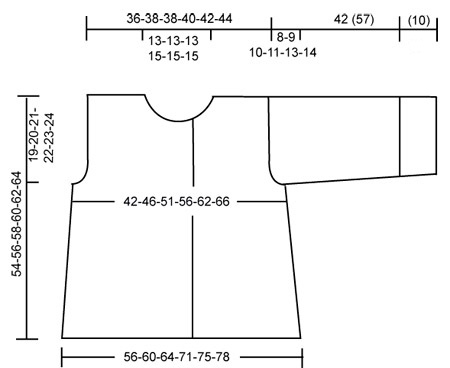 |
|
Avete terminato questo modello?Allora taggate le vostre foto con #dropspattern o inviatele alla #dropsfan gallery. Avete bisogno di aiuto con questo modello?Troverete 19 video tutorial, una sezione per i commenti/domande e molto altro guardando il modello su www.garnstudio.com © 1982-2025 DROPS Design A/S. Ci riserviamo tutti i diritti. Questo documento, compreso tutte le sue sotto-sezioni, è protetto dalle leggi sul copyright. Potete leggere quello che potete fare con i nostri modelli alla fine di ogni modello sul nostro sito. |
|








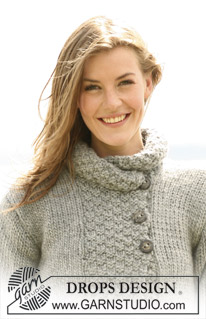



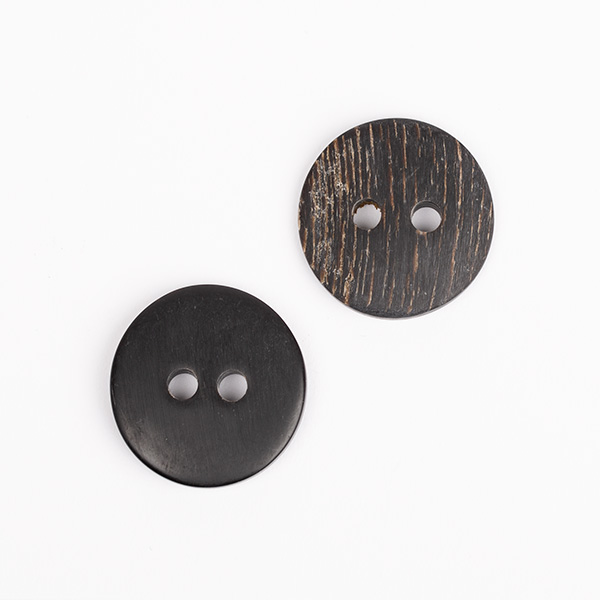

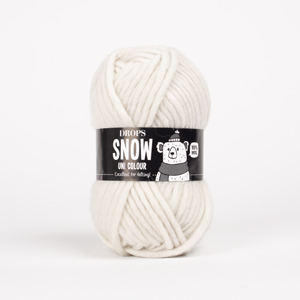
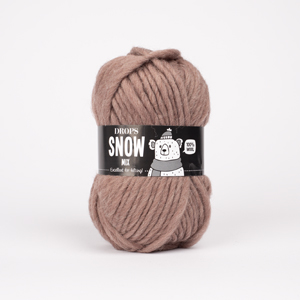























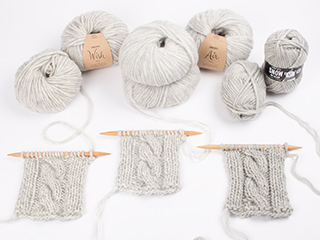











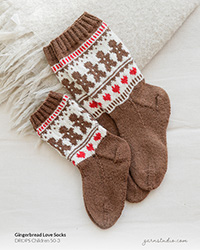
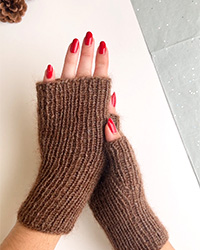
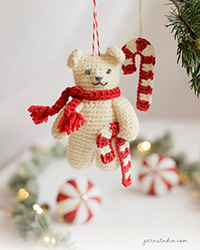
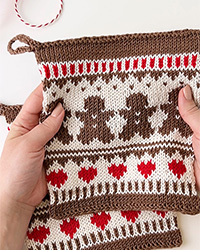
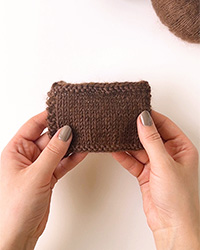

Lasciare un commento sul modello DROPS 103-1
Noi saremmo felici di ricevere i tuoi commenti e opinioni su questo modello!
Se vuoi fare una domanda, fai per favore attenzione a selezionare la categoria corretta nella casella qui sotto per velocizzare il processo di risposta. I campi richiesti sono indicati da *.